Bed Bug Action Plan for Dialysis Centers
ID
ENTO-542NP
Introduction
As of 2022, the common bed bug (Cimex lectularius) has become a well-established pest in low-income, elderly, and disabled homes. Because these bed bug infestations have become so common it would be wise for facilities and organizations that service these demographics to expect bed bug introductions on a daily basis. Dialysis centers service immunocompromised patients, most of which are elderly or disabled (Figure 1). Therefore, dialysis centers need to use an assessment-based pest management approach for controlling bed bugs in this sensitive environment. It is also important for these facilities to also have the easy-to-use methods and materials on hand to address these insects whenever they might arrive. This action plan was developed to aid employees when dealing with infested patients so that the bed bugs are not spread among other patients or become established within the facility.
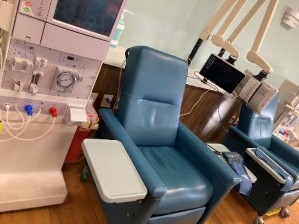
Action Plan
Training
The first recommendation of this action plan is to schedule a bed bug training program for all employees. Most employees do not want to accept that dealing bed bug introductions is now part of their job, but this is primarily due to fear. People think that bed bugs (or insects in general) are dirty and disgusting. Those that suck blood are even less appealing, and employees will fear being bitten, or worse, taking one home. Therefore, it is very important that employees get some good information from a trained professional so that they understand that bed bugs are only insects, and while they suck blood and are expensive to eliminate, they are not nearly as threatening as a mosquito, or the tick that they just pulled off their dog.
To find a training expert, contact your local Virginia Cooperative Extension agent and ask them who could provide you with an excellent bed bug training program. The agent may recommend an experienced pest management professional, or some other local authority. Once you have located a bed bug expert, schedule a training program for all employees. The training should include the identification of live bed bugs (live samples of all life stages is a must!), and bed bug evidence (including fecal spots and molted skins).
Understanding that all bed bugs are easy to see, and identify, will do a great deal to reduce employee fear.
Make sure your expert can provide a slide presentation covering bed bug biology and behavior. There is a great deal of misinformation on the internet, regarding how long bed bugs live or how many eggs they produce, and this needs to be corrected. Dialysis employees should try to become bed bug identification experts so that they can be a source of accurate information to others (Figure 2).
This would certainly go a long way with in helping employees to identify bed bug evidence at a distance.
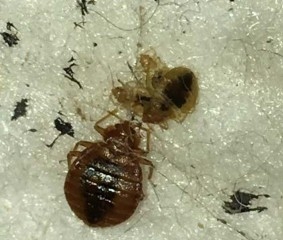
Identification and Response
The second component of this action plan is to know how to deal with a bed bug introduction. Note that, even if you have not yet received bed bug training, it is still imperative that you learn to visually identify bed bugs. An adult bed bug is rusty brown in color and the size of an apple seed. Immature bed bugs (nymphs) vary in size depending on their age but are smaller than the adults and are yellowish in color.
Although nymphs are not as obvious as the adults, even the youngest first instar nymph can be seen with the naked eye, particularly when it is moving. Bed bugs are not microscopic (like many people think), but they are good at hiding. Bed bugs are very cryptic and will often hide in cracks, crevices, and fabric creases. That being said, bed bugs also poop a lot! So often we may not see the bed bugs themselves, but their fecal spots are usually obvious on a patient’s clothing or handbag.
Unfortunately, the patients who bring hitch hiking bed bugs to the dialysis center are very likely dealing with heavy infestations in their homes.
Employees interacting with such patients should be trained on how to handle these situations tactfully. Often, elderly people do not realize the severity of their bed bug infestation and may not be able to afford effective treatment. If an employee finds a bed bug on a patient or their family member, they must remain calm, and remove the insect using a lint roller (see Client Inspection section). Then they must engage in open dialogue with patient to discuss the protocol that the facility has in place for bed bug prevention.
Client Inspections
Due to the poor health and sensitivities of patients, the management of the dialysis center may discourage the application of insecticide sprays and dusts. In these cases, nurses should have very thorough inspection strategies to reduce the chance of bed bug introductions. Inspect each patient when they enter the facility and encourage them to share if they have a bed bug infestation at home. If a bug is detected on a patient’s clothing or body, remove it with an extra sticky lint roller (Figure 3). After the lint roller has been applied and all found bed bugs are removed, the patients may proceed to a quarantine room. It is not necessary to remove the patients’ clothes after the lint roller has been applied, but be extra vigilant inspecting the belt area, collar area, and catheter area. Items such as purses may be infested with bed bugs. Require that all extra clothing (coats, hats, sweaters, etc.), belts, or purses either be left in their vehicle, or placed in a clear plastic container that the dialysis center should provide.
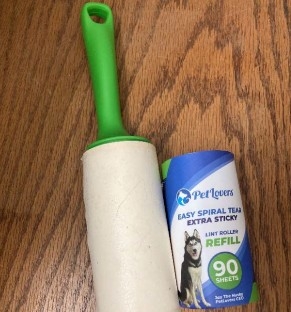
Additionally, bed bugs are known to infest wheelchairs. Because the patient will be at the facility for several hours, it might be advantageous to place any infested wheelchairs into a portable heart chamber, so that the chair can have the bed bugs eliminated while the patient is going through their dialysis process. This will require that you have an alternative wheelchair (or two) available to accommodate these patients while they are in your facility.
Daily Furniture and Equipment Inspections
After dialysis treatment had been completed and the patient has been removed, it is very important to inspect the chair and any attached equipment for bed bug evidence. If fecal spots or a live bug is found, then that chair should not be used again until it has been treated. It is for this reason that all dialysis chairs, waiting room chairs and wheelchairs should be thoroughly inspected for bed bug evidence at the end of each day. If a bed bug or any bed bug evidence is found the chairs or other articles they can be immediately placed into a secluded area or bed bug heat chamber.
Heat Chambers
Having a portable bed bug heat chamber on hand is a quick and easy way of dealing with bed bug introductions. These portable chambers can be set up quickly with their heaters and fans. The infested furniture can then be put inside. After the chamber is loaded, it can be zipped up and the interior heated to 122° F (the bed bug and egg thermal death point). Bed bug heat chambers such as the ZappBug Room are ~315 cubic feet in size that are large enough to heat multiple pieces of furniture at the same time (Figure 4). Keep in mind that it will take several hours to get all items up to 122° F, but the chairs and other furniture may be left to cook overnight to ensure that all bed bugs are eliminated. Keep in mind that a variety of smaller heat chambers are available that may be used to treat patients clothing or other possessions. However, these small
chambers will still take at least two to four hours to effectively kill all the bed bugs. If the dialysis center has a clothes dryer on site, heating infested clothing in the dryer for a minimum of 30 minutes will be enough to kill all bed bug life stages (Figure 5).
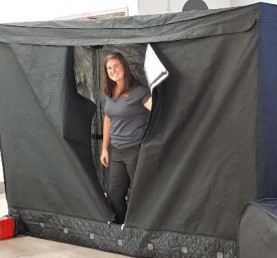
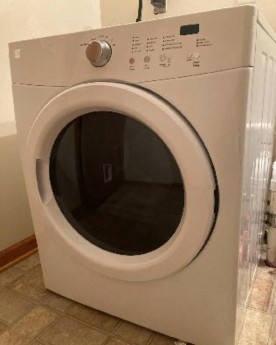
Action Plan Summary
As we move forward on our bed bug infested planet, many of us are going to have to accept that bed bug prevention is now part of our job. Therefore, the more quickly that we all become bed bug experts, the easier it will be to protect ourselves, our work facilities, and our clients from bed bug introductions.
- Keep this list in mind when considering the best methods of bed bug prevention for your facility:
- Keep a clothes dryer on site to treat patients’ and employee clothing.
- Invest in a bed bug heat chamber (with temperature sensors) that is large enough to hold multiple dialysis chairs, waiting room chairs and wheelchairs.
- Inspect known infested patients upon arrival. Use a lint roller to inspect their clothing. Put known infested patients in specific locations, and provide them with plastic containers to hold their personal belongs (e.g. purses, books etc.).
- Always keep extra sticky lint rollers on hand for inspecting chairs and other potential bed bug hiding places.
- Inspect all furniture, wheelchairs, and patient seating areas for bed bugs at the end of every day.
- Have the dialysis center’s pest control contractor inspect waiting rooms, reception areas, staff lounges, and dialysis room on a regular basis for bed bug activity. Follow the inspector during the process to make sure all at risk locations are inspected.
Resources
For additional information about bed bug prevention methods, please visit the following resources:
Virginia Department of Agriculture and Consumer Services, Bed Bug Fact Sheets, https://www.vdacs.virginia.gov/pesticide-bedbug-fact-sheets.shtml.
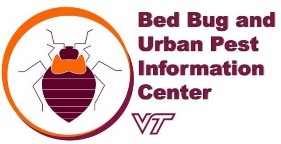
Virginia Cooperative Extension materials are available for public use, reprint, or citation without further permission, provided the use includes credit to the author and to Virginia Cooperative Extension, Virginia Tech, and Virginia State University.
Virginia Cooperative Extension is a partnership of Virginia Tech, Virginia State University, the U.S. Department of Agriculture (USDA), and local governments, and is an equal opportunity employer. For the full non-discrimination statement, please visit ext.vt.edu/accessibility.
Publication Date
March 1, 2023



